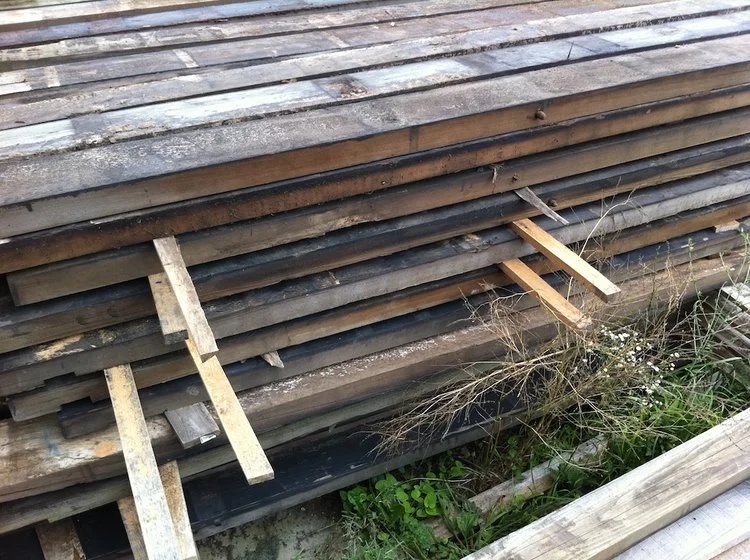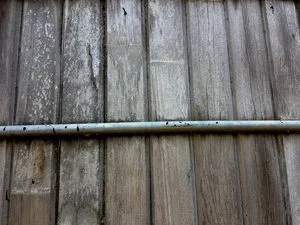Source Story: Surfrider Redwood
Princes of Surf Rode Redwood Boards
Anthology Woods Surfrider Redwood Series Celebrates the Early Pioneers of Surfing with Beachy & Distressed Redwood Wall Cladding
Duke Kahanamoku. (Getty Images)
Ancient O’lo Boards (History of Surfing)
Duke Kahanamoku, 1920. (Los Angeles Times)
Redwood reclaimed for wall paneling
Antique silver patina on redwood before resurfacing the wood
Aqua Blue Surfrider Redwood Wall paneling adds texture and a pop of color to interiors.
THE FIRST SURFBOARDS ON THE MAINLAND WERE MADE OF REDWOOD
In 1885, Thirty years before the famous Duke Kahanamoku popularized surfing on the mainland United States, three young Hawaiian Princes rode the waves of Santa Cruz on long redwood boards, becoming the first documented surfers in the continental US. The heavy “o’lo” boards, traditionally reserved for royalty, were milled of local first growth redwood from the Santa Cruz mountains. They were long and narrow, measuring 17 feet long and weighing up to 200 pounds, and best used for surfing gently sloping waves.
The three brothers, all nephews of King David Kalakaua, came to the mainland as students at a military academy, frequenting the Santa Cruz shores often on the recently-constructed Southern Pacific railroad. After their time at the academy, they returned back to the islands with their specialty boards, creating a demand for California redwood imports to Hawaii for surfboard fabrication. The original 140 year old boards were rediscovered in 2010 (still intact!), and were exhibited from July to November, 2015, at the Museum of Art & History in Santa Cruz before heading back to Hawaii. Another example of the long-lasting and durable qualities inherit in beautiful redwood!
EVOLUTION OF THE REDWOOD SURFBOARD
Duke Kahanamoku added to the early history of surfing and largely is credited for popularizing the sport, and became known as the “father of modern surfing.” He would shape his early plank surfboards from solid, vertical grain redwood with no fin, measuring 5 to 12 feet long. In 1927, surfer Tom Blake experimented with drilling holes into the heavy redwood to reduce the weight of the board, and then encased it in two other pieces of wood. Under 100 pounds, this board was ultralight at the time! This “cigar box” design, fitted with the first fin, made for a fast ride, and became the first mass-produced surfboard.
SURFRIDER REDWOOD: AN HOMAGE TO THE EARLY DAYS OF SURFING
Our Surfrider Collection celebrates the history of surfing in the US, which started with those mighty redwood boards harvested from the mountains of Santa Cruz. The Surfrider series offers another side of redwood, bursting with color from beachy laid-back styles to vibrant energetic tones. We use Low-VOC water-based finishes in colors ranging from bright yellows and greens to subdued blues and greys, and then partially skip-plane the planks to reveal the natural redwood coloring and texture beneath. Custom colors and glossier finishes are available as well. The distressed texture adds a lively backdrop to accent walls and interior cladding for an unforgettable design.
RECLAIMING REDWOOD: LASTING WOOD WITH A RICH HISTORY
Our Surfrider Redwood paneling is reclaimed primarily from old fencing along the West Coast. Redwood is known for being long-lasting and weather-resistant, and only gains more character with time. It is naturally resistant to insects and decay, and resists warping and splitting, making it an ideal wood to reclaim for a new use. Redwood stands have been extensively logged along the West Coast, and using reclaimed redwood products helps reduce the pressure for new wood.
Surfrider Redwood cladding comes in standard mixed widths (4-1/2" & 6-1/2") that are also customizable to include 3" widths. We have an array of colors to choose from, and are happy to make custom colors for your specific projects. This products works well as an accent wall in interior spaces or as a unique wainscoting for a room.
Character includes knots, missing knots, nail holes, surface checks and oxide stains, making for an expressive choice for a variety of interior applications. Each distinctive plank will send you back in time to the Victorian era of surfing, when the Redwood giants of the coast were first used to hang ten.
SURFRIDER REDWOOD







